From the dark days caused by the US embargo to an unexpected renaissance in the Chinese market, Huawei is certainly an example of resilience. While the absence in international markets is felt, in China, the new Mate 60 and Mate X5 are establishing themselves as references. We took advantage of a trip to Shanghai to go see them.
Since the imposition of the US embargo in 2019, Huawei has experienced dark days. This embargo has largely hampered the Chinese group’s ability to source essential components, putting a considerable damper on its growth. However, against all expectations, the company surprised the world by introducing 5G in its in-house chip, Kirin, thus offering an answer to this geopolitical obstacle, at least in China.
The renaissance on the domestic market
Despite this feat, Huawei has remained very discreet about its smartphones outside China. But a trip to Shenzhen or Shanghai reveals a completely different story. High streets, shopping centers and even small stands bear witness to the omnipresence of the Mate 60 and Mate X5. During our stay, we noticed that the enthusiasm for these new devices even surpassed that of the Apple Stores during the launch of the iPhone 15.
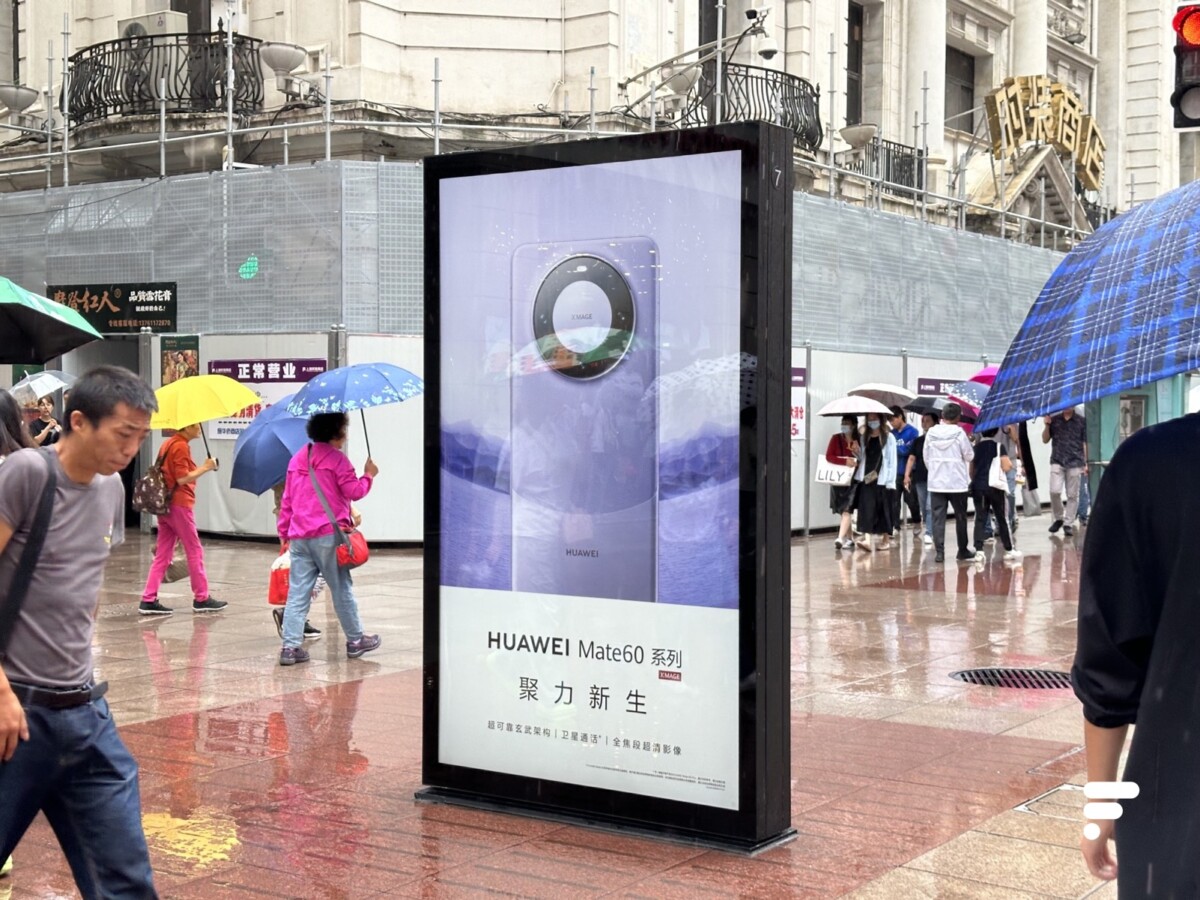
It must be said that Huawei, formerly the world’s second largest smartphone manufacturer, has clearly regained color in its domestic market. According to Counterpoint Research, in the second quarter of this year, its smartphone sales jumped 58% compared to the same period of the previous year. Its market share in China also increased from 6.9% to 11.3%, a sign of a renaissance.
Hot impressions: discovering the Mate 60 and Mate X5
Huawei Mate 60 Pro
During our visit to China, we had the opportunity to take charge of the Mate 60 and Mate X5. From a strictly technical point of view, Huawei’s Mate 60 series shows a solid performance, especially the Mate 60 Pro. It sports a magnificent 6.82-inch screen, whose OLED panel has characteristics that have nothing to envy of competing smartphones. As shown by the LTPO adaptive refresh rate, spanning from 1 to 120 Hz.
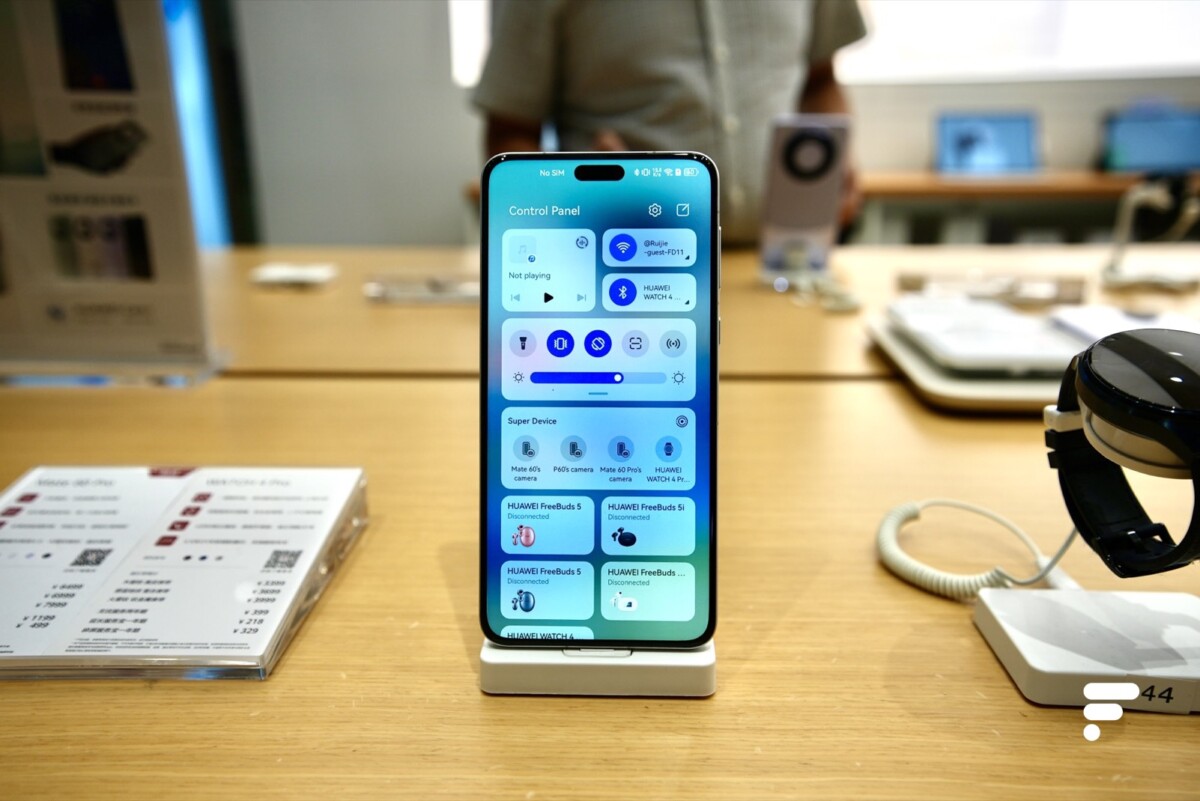
The screen is sculpted with four equal curves, giving the phone a sleek look. Additionally, the front has three holes for the selfie camera and other 3D sensors, reminiscent of iPhones with Face ID technology. To enhance durability, Huawei has covered the front of the Mate 60 Pro with the second generation of Kunlun glass, ensuring better drop resistance.
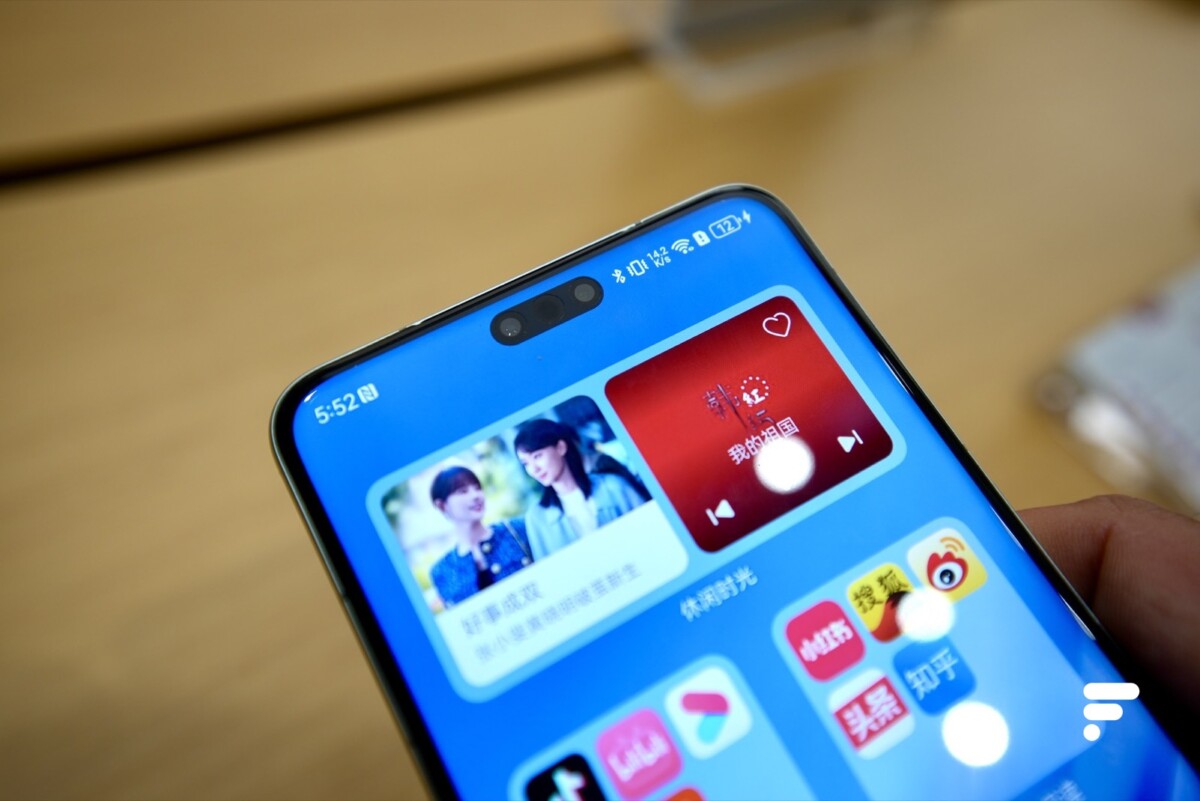
The Mate 60 Pro also stands out for its two-tone design, coming in a varied range of shades. Consumers will have the choice of four major colors: green, silver, purple and black, adding a touch of personalized aesthetic to this cutting-edge technology. It is truly successful and stands out from the competition.

The heart of the Mate 60 Pro lies in its operating system. It runs on HarmonyOS 4.0, a version based on Android. This latest version brings its share of new features with improved animations and handy widgets. Thanks to the latest Kirin chip, the phone offers a fast and smooth user experience. And even if the look of the interface is reminiscent of the EMUI skin of yesteryear, the adaptation for Android regulars will be almost instantaneous. What makes HarmonyOS truly distinctive is its ability to interact with a multitude of other devices running the same OS. In China, this interconnectivity encompasses a wide range of devices, from home gadgets to electric cars.
Photographically, the Mate 60 Pro is no slouch. It is equipped with three cameras including a 50-megapixel variable aperture main camera, ranging from f/1.4 to f/4, as well as OIS optical image stabilization. However, the end of the partnership with Leica marks a new era for the brand, with the hope of maintaining the same image quality. It is now displayed XMage.
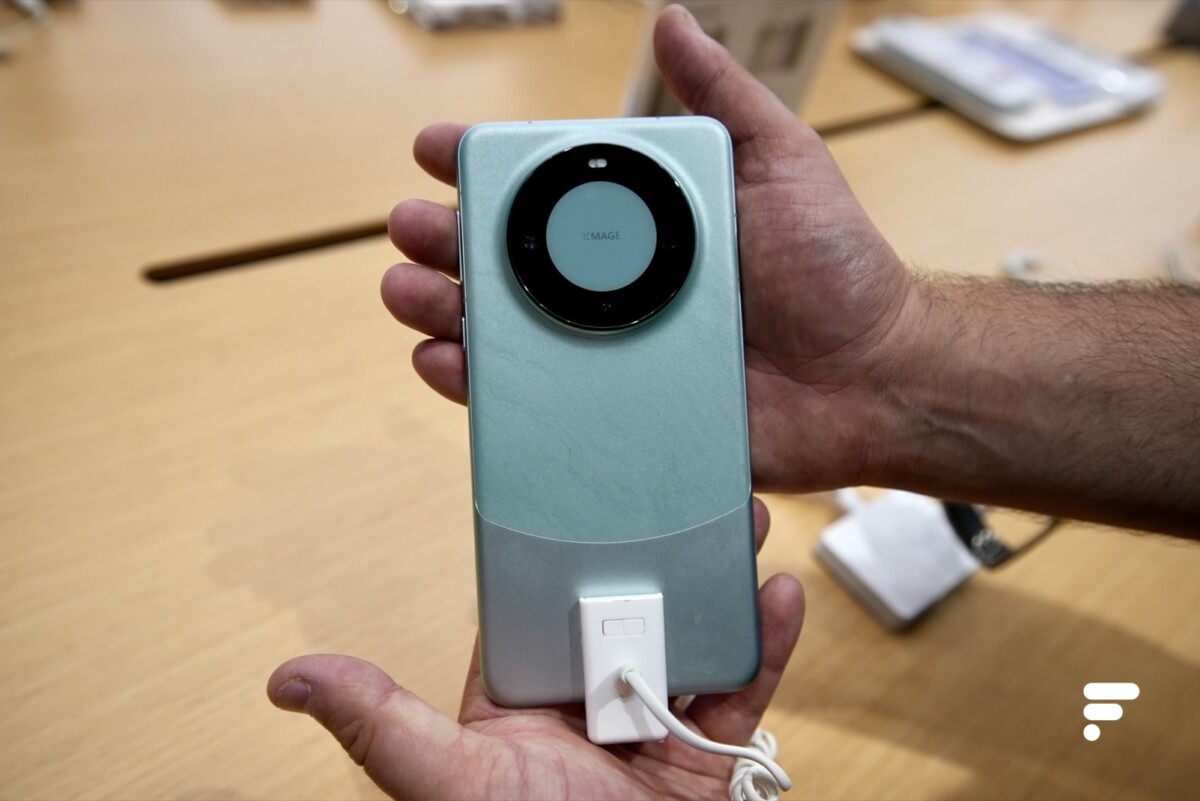
The Kirin 9000S chip is Huawei’s surprise in the semiconductor field. This chip engraved in 7 nm stands out for its 5G connectivity. While it doesn’t always compare to industry titans like the latest chips from Apple, MediaTek, or Qualcomm in terms of raw performance, the Kirin 9000S demonstrates astonishing resilience, especially given the challenges logistics and American sanctions that Huawei had to face.
In the face of sanctions imposed by the United States, it is a real feat that Huawei has managed to produce the 7nm chip for the Mate 60 series. The question of how and where this chip was designed raises strong questions within of the American administration. Regardless, it serves its purpose.
Huawei Mate X5
Finally, we also had the opportunity to discover the Mate X5, Huawei’s response to Samsung’s Galaxy Z Fold 5. While Samsung is trying to regain ground in China with its foldable model, after being largely eclipsed by local brands and Apple, Huawei has clearly pulled out all the stops with the Mate X5. And I must say that the latter really appealed to me.
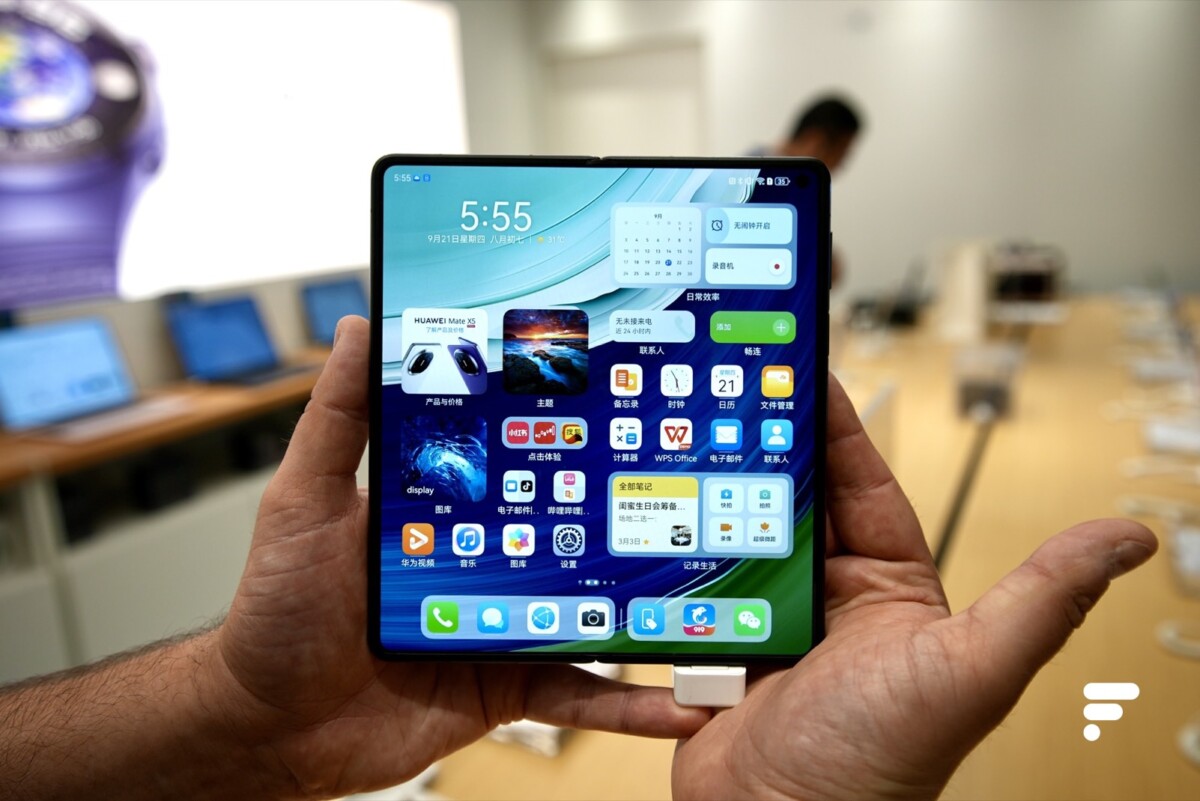
What struck me straight away was the quality of the product’s finish. The vegetable leather feels luxurious, and the phone’s soft curves feel great to the touch. Huawei didn’t do things by halves: not only is the smartphone waterproof (IPX8 certification), but it is also remarkably thin. This attention to detail is also reflected in the choice of materials.
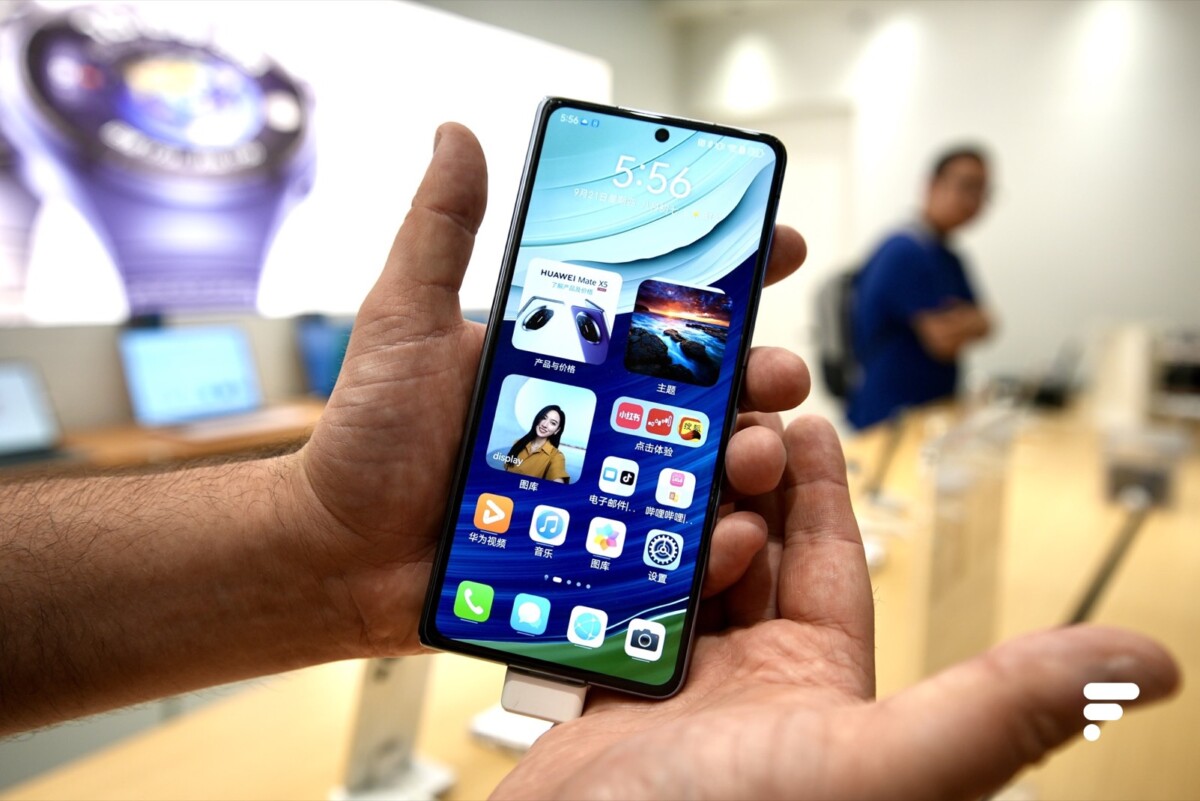
On the outside, the Mate X5 is protected by the all-new Kunlun Xuanwu tempered glass. This glass, having obtained the five-star Swiss SGS Gold Standard certification, guarantees optimal resistance to scratches and impacts. Such protection reinforces the durability of the smartphone, making it more resilient to everyday hazards. Which is a good thing when we’re talking about a folding smartphone.
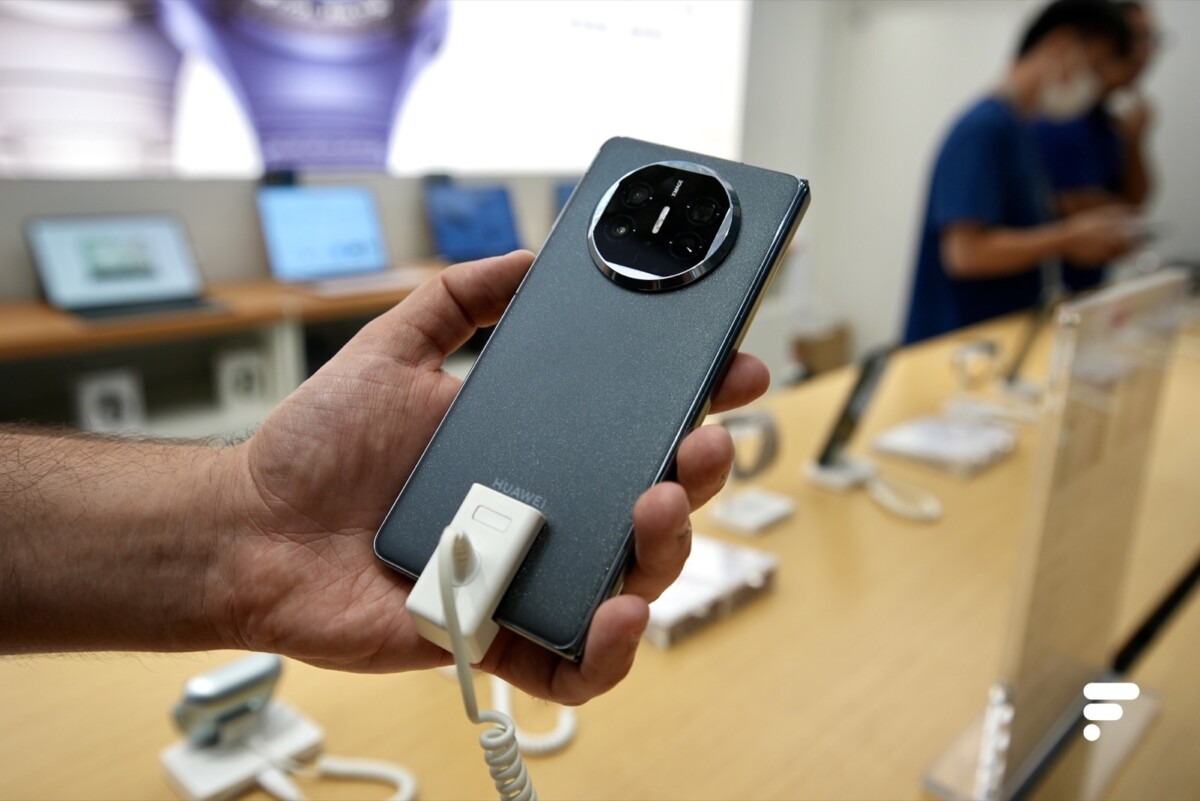
When it comes to the interior screen, the Mate X5 stands out with its shockproof flexible screen technology. Huawei has opted for a laminated composite structure incorporating non-Newtonian fluid materials. These allow the screen to be solid when subjected to strong pressure and flexible under normal conditions. This innovation is reminiscent of what Honor presented during a tour of its factory… Honor engineers have created a non-Newtonian fluid for folding screens. Its viscosity changes depending on the force or stress applied, meaning it can act like a solid under some conditions and like a liquid under others. When flexing the screen, the fluid can help evenly distribute stress across the entire surface of the screen, minimizing the chance of permanent wrinkles or deformation.

In terms of display features, the Mate X5 is undeniably premium. Its exterior OLED screen measures 6.4 inches while the foldable interior screen stretches to 7.85 inches. The exterior display has a resolution of 2504 x 1080 pixels, and the interior offers a definition of 2496 x 2224. Both displays offer an impressive brightness of up to 1800 nits and high-frequency PWM dimming of 1440 Hz.
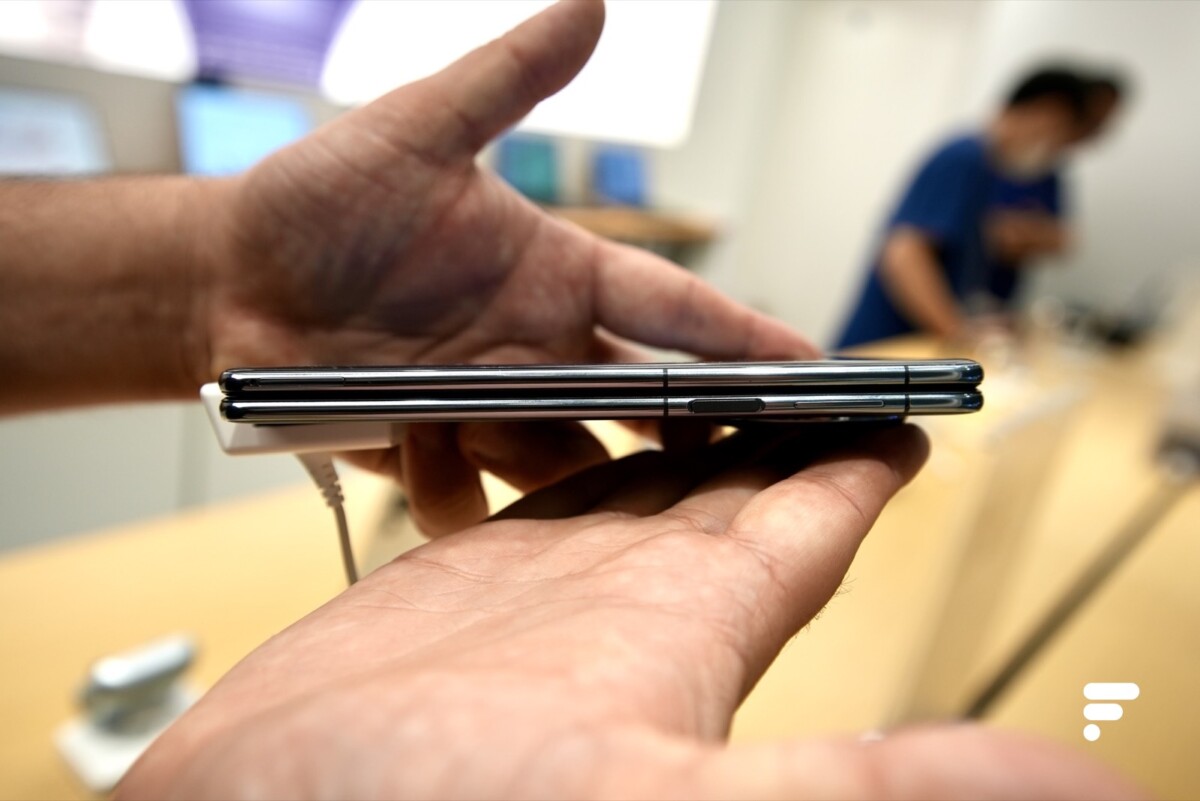
On the photography side, the Mate X5 is aligned with the Mate X3. It features a 50-megapixel main camera, complemented by a 13-megapixel ultra-wide-angle camera and a 12-megapixel 5x optical zoom periscope telephoto lens. This trio offers interesting versatility for this smartphone format.

Huawei regains color
On a technical level, the smartphones of 2024 do not fail to seduce, and the same goes for their software features. Huawei can clearly compete with the iPhone 15 and 15 Pro, at least in the Chinese market. If Huawei continues this momentum, the brand will consolidate its position in China. Chatting with locals, the enthusiasm of the Chinese was undeniably evident.
However, on a global scale, a shadow hangs over this almost perfect picture: the absence of Google services. Huawei phones, despite their technical prowess, remain handicapped by the exclusion of these essential services outside China. This isn’t just a simple inconvenience; this is a real obstacle which could slow down the adoption of these devices on international markets. In any case, for the moment, their marketing has not once been mentioned by Huawei.
